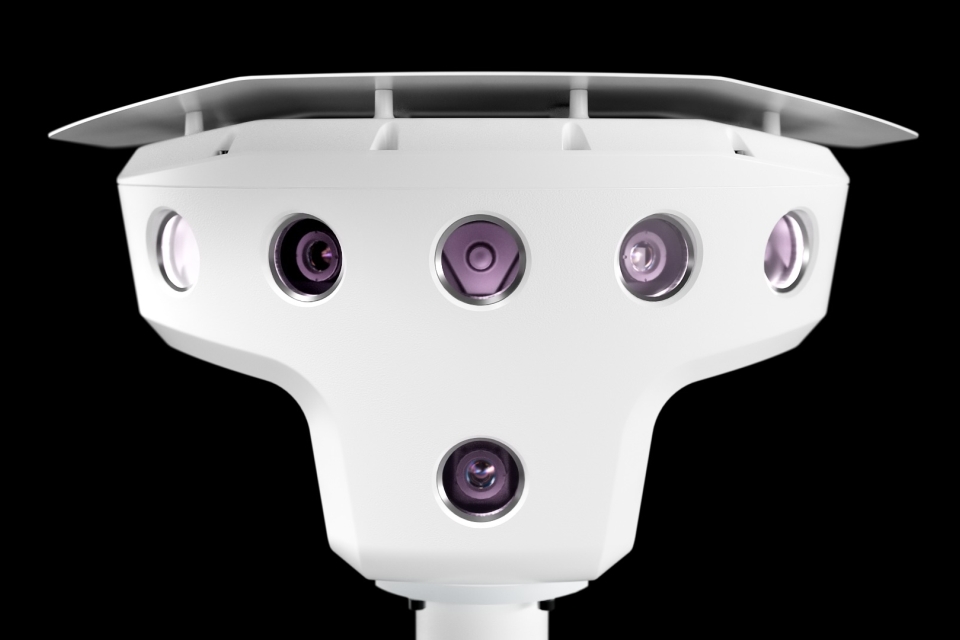Orca AI has unveiled SeaPod, a situational-awareness platform for ships, featuring eight highly sensitive cameras. The fully automated lookout uses artificial intelligence (AI) and computer vision to assist the crew on the bridge.
The system is said to provide unmatched field-of-view and enhanced target detection, all wrapped up in a lightweight, durable construction.
Orca AI’s SeaPod acts as a fully automated navigational assistant that processes multiple sources of information in seconds, mimicking and enhancing human watchkeeping 24/7 to identify and evaluate the most complex marine traffic situations in real time.
Also read: How new flue gas sensor measures ships’ black carbon emissions
Automated all-target detection
Leveraging advanced computer vision and machine learning, it detects, tracks, and classifies targets – even small ones – at any distance, streaming the required information to a user-friendly interface alongside other critical target parameters.
‘Improving situational awareness through automated all-target detection and risk prioritisation not only minimises workload and fatigue for bridge officers, but also helps crews make better decisions earlier,’ says Orca AI CEO Yarden Gross. ‘It eliminates confusion and reduces the risk of human error especially in congested waters and challenging visibility conditions. Thanks to AI, the system gets smarter every day.’
He adds: ‘As well as improving safety and operational efficiency for shipping today through automated collision avoidance alerts and manoeuvring recommendations, it also represents another critical step towards enabling safe autonomous navigation in the future.’
225° field-of-view
Positioned on the compass deck – the uppermost accessible deck of the ship alongside other navigation scanners and antennae – the new SeaPod is equipped with cameras providing field-of-view (FOV) coverage of 225° and thermal-view cameras providing a 100° FOV. The latter are forward-looking infrared (FLIR) thermographic imaging devices adapted for marine use.
With built-in panoramic mode, continuous automated calibration enables optimal FOV utilisation, enabling detection of small objects up to four nautical miles away regardless of weather conditions. Non-AIS targets include fishing vessels and other small craft, floating containers, and large floating debris such as fishing nets, as well as marine mammals.
Yarden: ‘We have carefully designed the new unit to sail in all weather conditions, humidity, and temperatures ranging from minus 20°C to plus 40°C. It has been rigorously tested for durability, with proven uptime of 99.999 per cent. The camera lenses are tilted to lead water optimally over and off the lenses so visibility is consistent.’
Also read: ABB and Wallenius open first Oversea Fleet Support Centre
Full navigational compliance
The unit complies with all regulatory requirements including the IMO’s SOLAS Chapter V Regulation 22 (Safety of navigation/Navigational bridge visibility) and the STCW (Standards of Training, Certification and Watchkeeping) standard that requires a human lookout to detect targets from a specific distance.
Installation safety has been a priority, with a technician able to easily carry the new unit, which weighs just 10 kg, up the ladder to the flying bridge for installation. Installation itself can be performed in a day, either cold-installed or hot-installed using a welding torch.
Should a fault arise, the troubleshooting mode allows an operator to identify problems in real time with just a press of a button. The unit also provides 24/7 event recording for crew debriefing and training.
Picture: The SeaPod digital watchkeeping unit (by Orca AI).
Also read: How 30% of the risks of building offshore ships can be avoided








